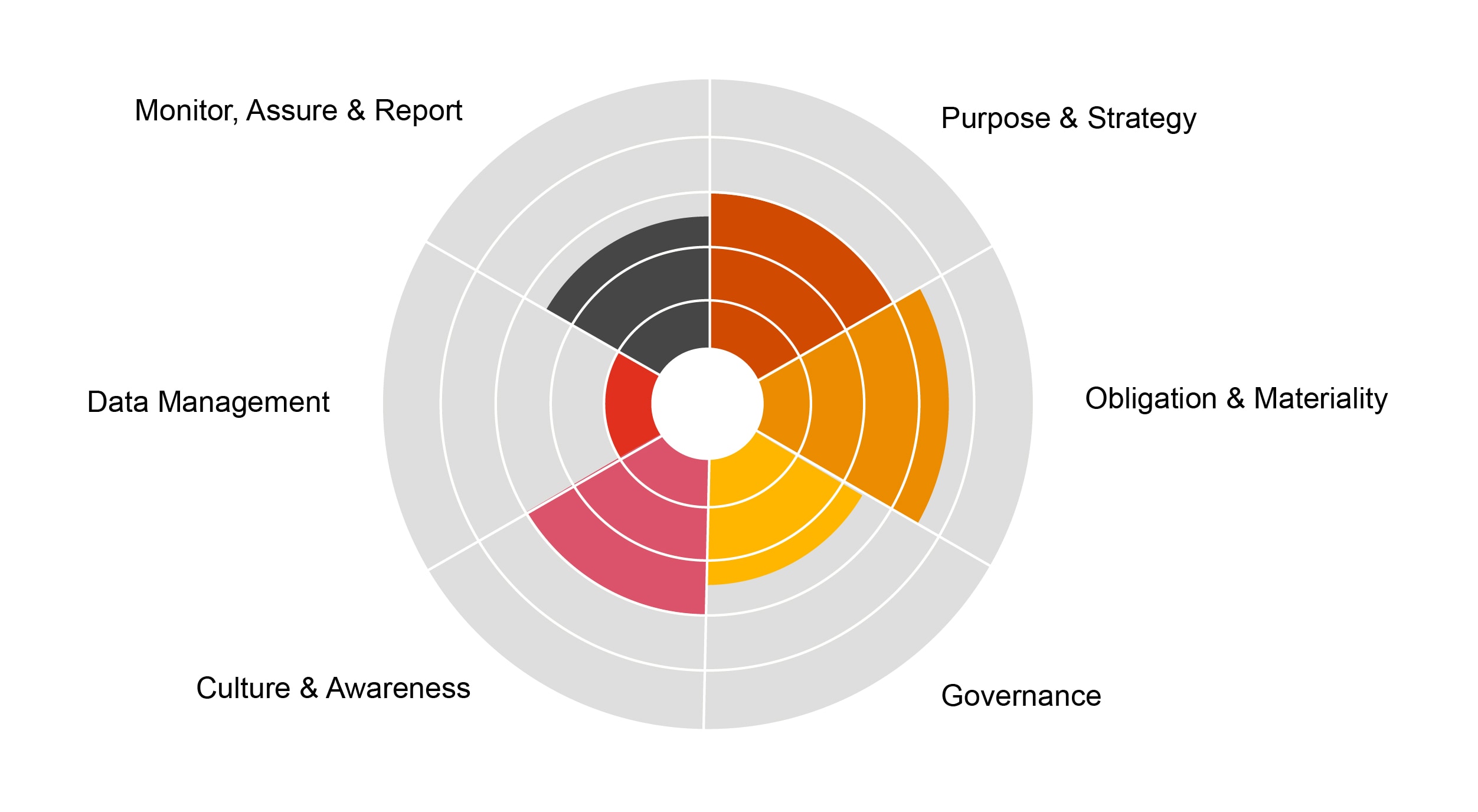

Global Compliance Survey 2025
Explore insights from our global compliance survey to enhance your compliance strategy. Drive growth in a complex business environment with PwC today.
Internal Audit (IA) is increasingly including ESG in their audit plans. PwC is able to use its Connected Risk Engine (CRE) technology to help IA assess and benchmark the maturity of the ESG control environment and processes in their organisation. The output can be used to update your ESG strategy, target areas of higher priority, and gauge the success of investment in ESG.
This can give you a blueprint to help navigate complexity, manage risk, and plan for the next stage of ESG maturity.
The assessment covers six areas that are important in an effective ESG framework:
We have developed criteria for each area based on relevant standards and our experience in the market. We use a five-point maturity scale to allow IA to clearly visualise the current level of maturity, and identify recommendations on how to enhance it. This also allows the organisation to determine its target maturity and assess progress against it over time.

CRE can be tailored to compare maturity in different parts of the organisation or to understand the views of different stakeholder groups. This can help to align objectives and priorities, obtain better consistency, and streamline processes.

PwC’s CRE tool has over 20 other assessments, modules, and this is increasing. These include topics like IA effectiveness, cyber security, and compliance management. To find out more, see our main PwC CRE page hereOpens in a new window.
How can Internal Audit’s superpowers help organisations ‘see through walls’ to avoid hazards, remove complexity, and find new opportunities? Find out in PwC’s Global Internal Audit Study.



Explore insights from our global compliance survey to enhance your compliance strategy. Drive growth in a complex business environment with PwC today.


PwC research reveals that heat stress and drought threaten critical minerals, crops, and metals. Organizations must act now to mitigate disruptions.


Responding to climate change and becoming more sustainable can also unlock value for businesses. Make your climate actions count.


Find out how technology is changing the way leading organisations see risk, creating new value and building resilience.

Shaun Willcocks
Global Risk Markets Leader, Global Internal Audit Leader, Partner, PwC Japan
Tel: +81 (0)90 6478 6991


Julien Linger
Global Sustainability Risk, Resilience and Adaptation Leader, PwC Netherlands
Tel: +31 (0)63 094 45 19
